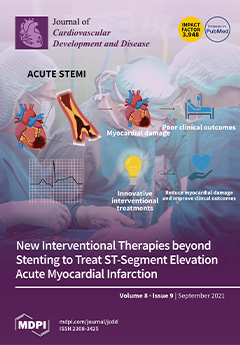Background: TAVR is a safe alternative to surgical aortic valve replacement (SAVR); however, sex-related differences are still debated. This research aimed to examine gender differences in a real-world transcatheter aortic valve replacement (TAVR) cohort. Methods: All-comer aortic stenosis (AS) patients undergoing TAVR with a Medtronic valve across 19 Italian sites were prospectively included in the Italian Clinical Service Project (NCT01007474) between 2007 and 2019. The primary endpoint was 1-year mortality. We also investigated 3-year mortality, and ischemic and hemorrhagic endpoints, and we performed a propensity score matching to assemble patients with similar baseline characteristics. Results: Out of 3821 patients, 2149 (56.2%) women were enrolled. Compared with men, women were older (83 ± 6 vs. 81 ± 6 years,
p < 0.001), more likely to present severe renal impairment (GFR ≤ 30 mL/min, 26.3% vs. 16.3%,
p < 0.001) but had less previous cardiovascular events (all
p < 0.001), with a higher mean Society of Thoracic Surgeons (STS) score (7.8% ± 7.1% vs. 7.2 ± 7.5,
p < 0.001) and a greater mean aortic gradient (52.4 ± 15.3 vs. 47.3 ± 12.8 mmHg,
p < 0.001). Transfemoral TAVR was performed more frequently in women (87.2% vs. 82.1%,
p < 0.001), with a higher rate of major vascular complications and life-threatening bleeding (3.9% vs. 2.4%,
p = 0.012 and 2.5% vs. 1.4%,
p = 0.024). One-year mortality differed between female and male (11.5% vs. 15.0%,
p = 0.002), and this difference persisted after adjustment for significant confounding variables (Adj.HR1yr 1.47, 95%IC 1.18–1.82,
p < 0.001). Three-year mortality was also significantly lower in women compared with men (19.8% vs. 24.9%,
p < 0.001) even after adjustment for age, STS score, eGFR, diabetes and severe COPD (Adj.HR3yr 1.42, 95%IC 1.21–1.68,
p < 0.001). These results were confirmed in 689 pairs after propensity score matching. Conclusion: Despite higher rates of peri-procedural complications, women presented better survival than men. This better adaptive response to TAVR may be driven by sex-specific factors.
Full article






